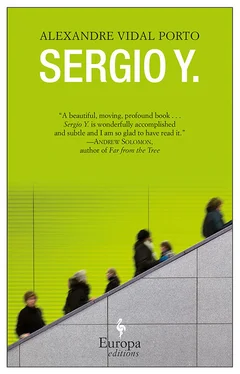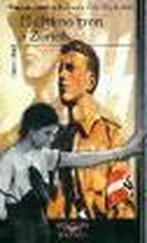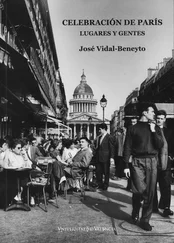To my surprise, what I later learned was that when Sergio told his parents he wanted to study in New York, Tereza and Salomão flew there and chose the Grove Street apartment themselves. They took advantage of what might merely have been a whim on their son’s part to buy a pied-à-terre in the city. But the apartment was much more in keeping with the son’s tastes than the parents’, I think.
Salomão’s lawyer handled all of the paperwork directly with the real estate agent after they had decided to make an offer on the townhouse’s two upper floors. This was all told to me by Tereza in a recent conversation.
For Sergio, the walk to Cecilia Coutts’s office was a very short one. He would leave the house, walk down the stoop, turn right, walk to Bleecker Street, turn right, then walk another block before turning right again on Barrow Street. He never even had to cross the street. Along the way, he would pass a vitamin shop, a stationery store and a small cinema showing independent films, which he enjoyed watching on occasion.
Dr. Coutts’s office was also in a townhouse, on the ground floor. As I stood in front of the building, I could see Sergio Y. standing at her door. His finger would have touched the same intercom button that I would press. His hand would have grasped the same brass doorknob my hand would grasp; he would have pushed that same cast-iron and glass door that I was now opening. Exactly the way I was doing.
We were together in the same place, separated by time.
After opening the iron and glass door, I walked along a dark, carpeted corridor. I pressed the black button under the number 3 and felt Sergio Y.’s finger under mine.
VANITY ALMOST PUSHED ME INTO THE ABYSS
Cecilia Coutts was much more attractive than I had imagined. Her lips were thin and her smile appeared sincere. She was approximately 1.70 meters tall and had straight black hair that framed her handsome features. She must have been about 40, which also surprised me. Perhaps I felt that since we shared the same patient we might also share the same age.
She greeted me with a handshake. Probably because it was supposed to be a hot day, she wore a sleeveless T-shirt and — impossible not to notice — no bra. After greeting me, she asked me to follow her. She turned and walked down a corridor. I accompanied her. On the way, she asked if I would like a coffee. I was never much of a coffee drinker, but I gladly accepted the offer. I felt it was expected of me.
We entered a large room with tall windows. This must not have been where she saw patients. I imagined it was a large office, where she read, made calls, wrote and I presume received guests.
In the corner, by the door, was a small couch facing two armchairs. A bookshelf took up the entire side wall. Near the window at the other end of the room, there was a wooden desk. On it were some books, scattered papers and a white laptop, which was on with its screen open.
Cecilia gestured for me to sit in one of the armchairs in front of the sofa, which I obediently did. Without a word, she disappeared into the hallway, returning with a mug of coffee and packets of sweetener. Instead of a spoon, she offered me a wooden stick wrapped in a paper napkin. She sat in front of me and crossed her legs.
I started by thanking her for making the time to see me.
“Ms. Yacoubian sent me an email telling me about you,” she said with a smile.
She continued: “Sandra was always talking about you. It’s a great pleasure to meet you. ‘You’re one of my heroes,’ was what she told me when we first met.”
I had enough presence of mind not to reveal that our patient’s name change still sounded foreign to me. I did feel a certain discomfort, though, which, rationally, I tried to conquer. I policed myself not to use Sergio, only Sandra. For me, it was like speaking in code.
According to Cecilia Coutts, Sandra’s was a clear case of sexual dysphoria. “A typical case. What was striking was that there was no inner conflict on her part in understanding her clinical condition. She very naturally accepted the fact that she was a human and medical outlier,” she said.
She explained how Sandra had made an appointment to see her the same month she had arrived in New York. In her first session she identified herself as ‘transgender’ and declared a readiness to transition. “She told me she didn’t want to waste any more time.”
Sandra had told her that, at age twelve, while reading an article about transgender individuals in a magazine, she realized that she might be transgender herself. That’s how she first identified what she felt about her own body.
“She tried to talk to her parents, but they became upset. Sandra acknowledged the embarrassment she had caused. From that day on, she vowed she would no longer raise the subject. Tereza and Salomão also never mentioned it again. That’s what she told me. Perhaps she felt the feeling would go away with time. She might have thought that she would eventually surrender to what was expected of her. Or she could have just as easily committed suicide. But none of that happened. Angelus’s example opened Sandra to a feeling of existential possibility that Sergio had never known existed. She became aware of that feeling of possibility thanks to you,” she said.
I did not feel comfortable enough to confess my ignorance then and there to that beautiful woman who was calling me a hero. Everything she had said was news to me. But I didn’t want to disappoint her. I decided that I would listen to more of what she had to say, because, after all, I had come to her office to listen. She knew much more about Sandra’s case than I did. At the appropriate moment, I would ask questions that could clarify my doubts but without making my ignorance patently clear.
Cecilia Coutts explained that the psychological aspects of Sandra’s dysphoria seemed to have stabilized by the time she had met her. They had eight evaluative sessions. It was around then, she said, that Sandra made the most references to me. With the initial diagnosis confirmed, she continued her treatment and then moved on to hormone therapy. Gradually, she fulfilled every stage of the process until, finally, she underwent her reassignment surgery.
“The process wasn’t easy because it’s not an easy thing,” she said. “But with Sandra things were easier than with most patients. She understood very clearly what was happening to her, her condition.”
Coutts went on: “She came to me already very well adjusted. She spoke about you with respect, admiration. She said nothing would have been possible without your help.”
Emotionally, hearing all the good I had done Sandra brought back those feelings I had had when I ran into Tereza in the supermarket and learned Sergio had moved from São Paulo. Almost like someone trying to avoid a subject, I asked Coutts what Sandra’s life was like in New York.
She said she was extremely confident and took her cooking classes very seriously. She had taken a basic cooking techniques course and then other more specific and shorter ones. In total, she attended the school for a little over four years.
“She had very high grades and received excellent comments from her teachers. They were unanimous in recognizing that she had a unique talent for cooking, and with their help she landed internships at the restaurants of her choice. By the time those internships began, she was already dressing and living as a woman, though she was still transitioning and had not yet formally changed her name. My opinion is Sandra did an excellent job at avoiding the sexism and prejudice present in the kitchens where she worked. The prejudice she could have faced as a transgender individual was neutralized by the enthusiastic support of her professors and the chefs in the kitchens where she worked. Sandra would arrive early, leave late and work very hard. She experienced no problems to speak of. In the end, the fact she was transgender was only further evidence of her uniqueness. It was just one of the many rare things about her. It was almost a comparative advantage.”
Читать дальше












